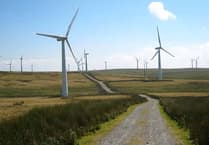Letter to the Editor: I’m sorry to see that your recent contributor Electric vehicles aren’t as green as claimed, (Letters, Cambrian News, 22 February) has been misled — probably by certain sectors of the media that as we know are funded by big business associated with oil companies.
However, he’s right to point out the major benefit of reduced pollution (less asthma and other diseases, sweeter air, and less dirt) to which can be added much quieter built-up areas.
Yes, it can take a long time to charge, but many people do it while they enjoy time with their family or asleep at home, and never visit a public charger. How many kids enjoy a trip to the filling station on the way to the cinema or zoo? On a longer journey most EVs will public-charge from 10 to 80 per cent in the time it takes to have a toilet break —which you’ll need after three hours— and grab a quick snack. You’ll probably want to stop for longer than that anyway.
Yes, the carbon footprint of making a new EV is greater than that of an internal combustion engine (ICE) petrol or diesel car. But here and in Europe it has been shown by university studies to take only around two years for the EV to have less overall carbon footprint than the ICE. From there on, it’s all gain for the environment. And no, the batteries don’t die after two years! Huge numbers of EVs are approaching 100,000 miles, and many have exceeded that —on the original battery.
The letter mentions that EVs require reliable and adequate power sources, as if ICE vehicles don’t require filling stations. They need to be reliable too; and are they always convenient when you need one? And how does the fuel get to the filling station? In a very heavy tanker, doing its own polluting, and pot-hole creation along the way.
Fires — that old chestnut! Firstly, I’d rather be in a vehicle with a battery that if it starts to catch fire, starts slowly smouldering before becoming seriously dangerous, rather than in a vehicle carrying up to 60 litres of highly inflammable liquid and vapour piped under pressure right next to an exceedingly hot engine. Thatcham Research CTO, Richard Billyeald, said that electric vehicles generally have a lower fire risk than fossil-fuel vehicles. “Our latest research indicates that the risk of a fire for all types of EV remains less likely than for ICE vehicles.”
Once a fire does start it is not ‘impossible to extinguish’, but it needs to be doused or immersed in water to cool it until it has gone totally cold. Incidentally, the same applies to your laptop, and probably other devices powered by lithium batteries around your home. So take care.
Another chestnut – water and electricity don’t mix. Well, that’s true of course! But the makers realised that — who’d have thought it — and sealed everything very carefully. I only know data for one small city-car EV. The maker of that recommends driving through water no more than 10 inches deep. If you want to take your ICE car through water that deep, then good luck.
And so to the very large elephant that goes by the name of weight’.
Yes, an EV version of an ICE car will weigh a bit more, but not much more. Extensive weight data is available from manufacturers.
The concern expressed was about multi-storey car parks collapsing under the extra weight compared with that of a typical car made in 1976.
It’s clear that the problem lies with cars in general weighing a lot more than they used to.
If we want to protect our bridges and reduce the creation of potholes, laudable objectives, we should buy fewer luxury cars, SUVs, and 4x4s (I know many farmers and small-holders need the latter) as these are all a lot heavier than your ordinary car whether ICE or EV.
So I think we can dismiss the elephant which I’m sure will be glad to return to its natural environment!
By the way, did you know that cobalt is used, and has been for years, in the refining of petrol, and is unusable — not recyclable — afterwards. And the latest design of lithium batteries as used in current Teslas, doesn’t use cobalt at all anyway.
The carbon footprint of using an ICE vehicle seldom if ever takes into account the huge carbon footprint of extracting, transporting and refining the fuel it uses. Many EV owners charge their cars using purely green electricity.
To the final point, if you refer to those currently in government, I agree wholeheartedly that “our politicians do not have a clue” and certainly not about the plight of the vast majority of ordinary folk in this country.
John Baddeley,
Lampeter





Comments
This article has no comments yet. Be the first to leave a comment.